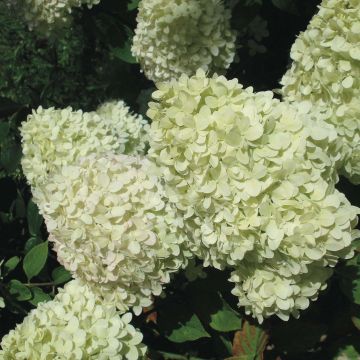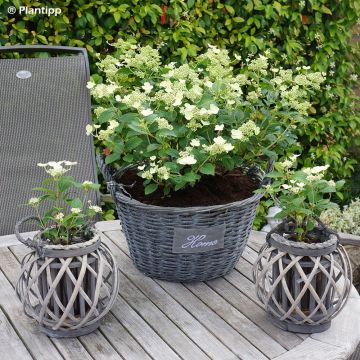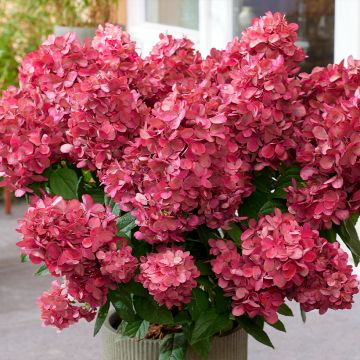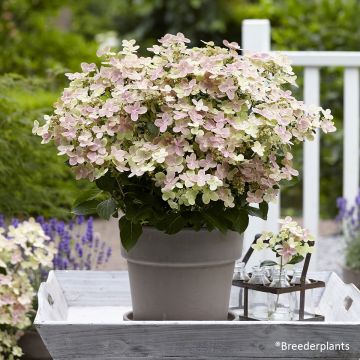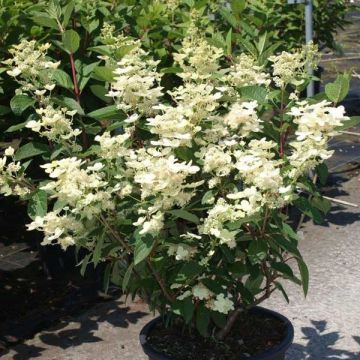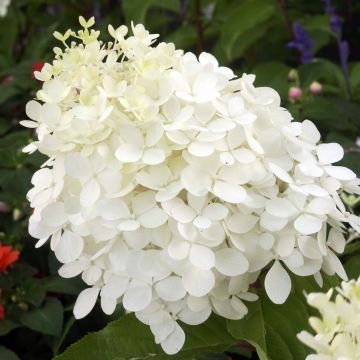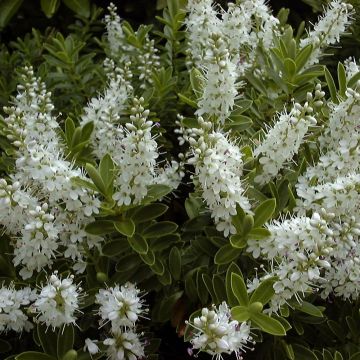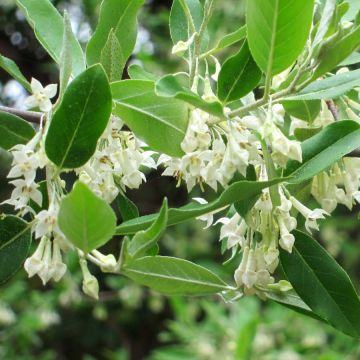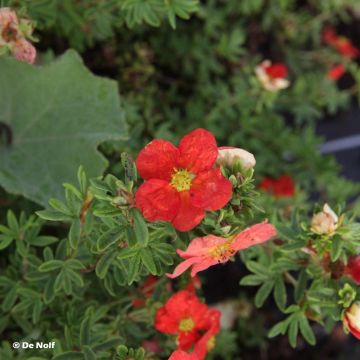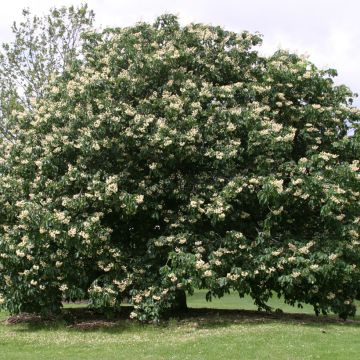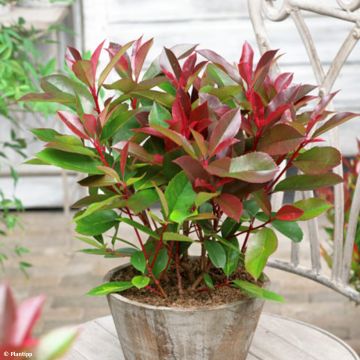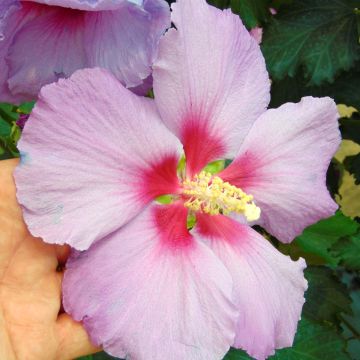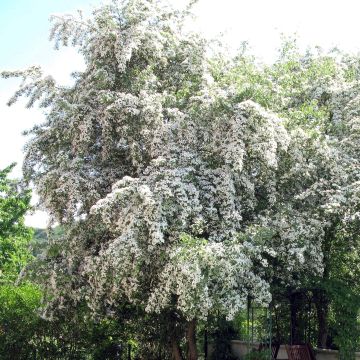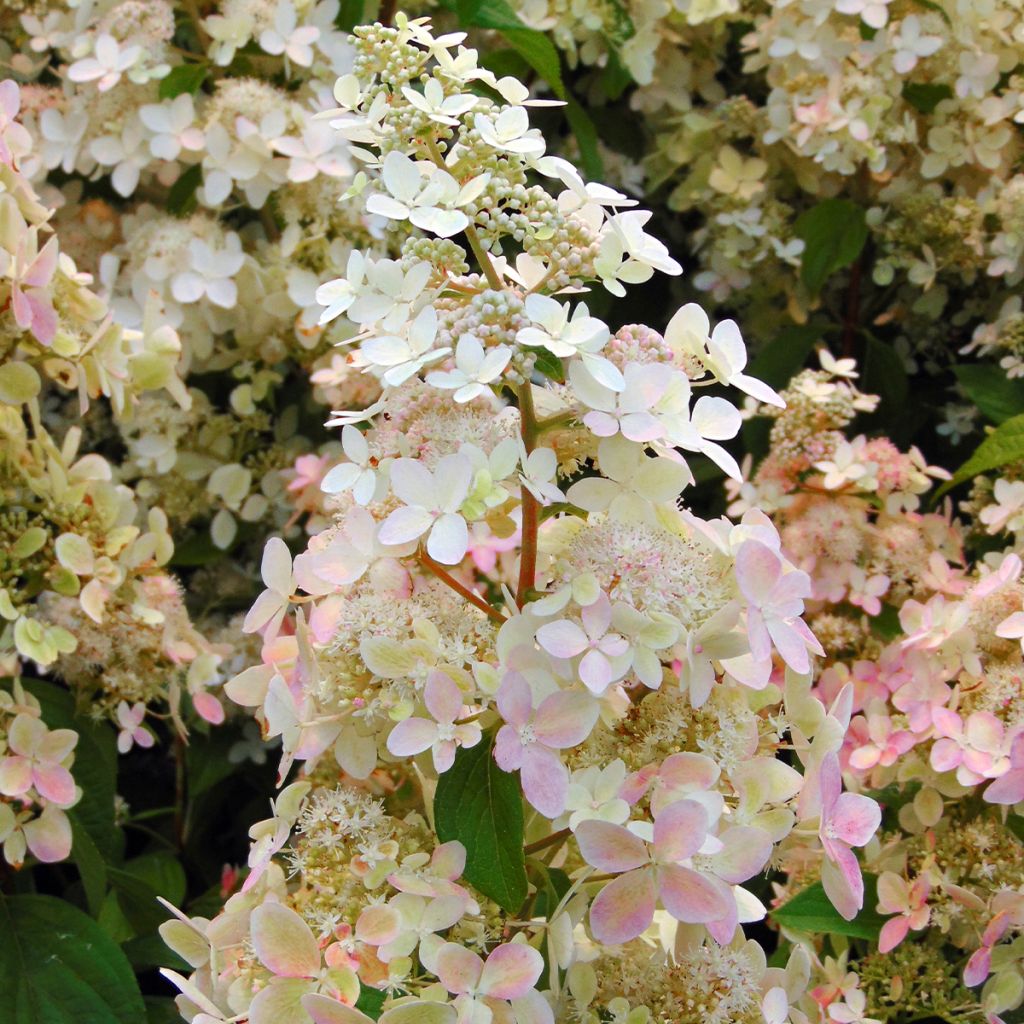

Hortensia - Hydrangea paniculata Confetti
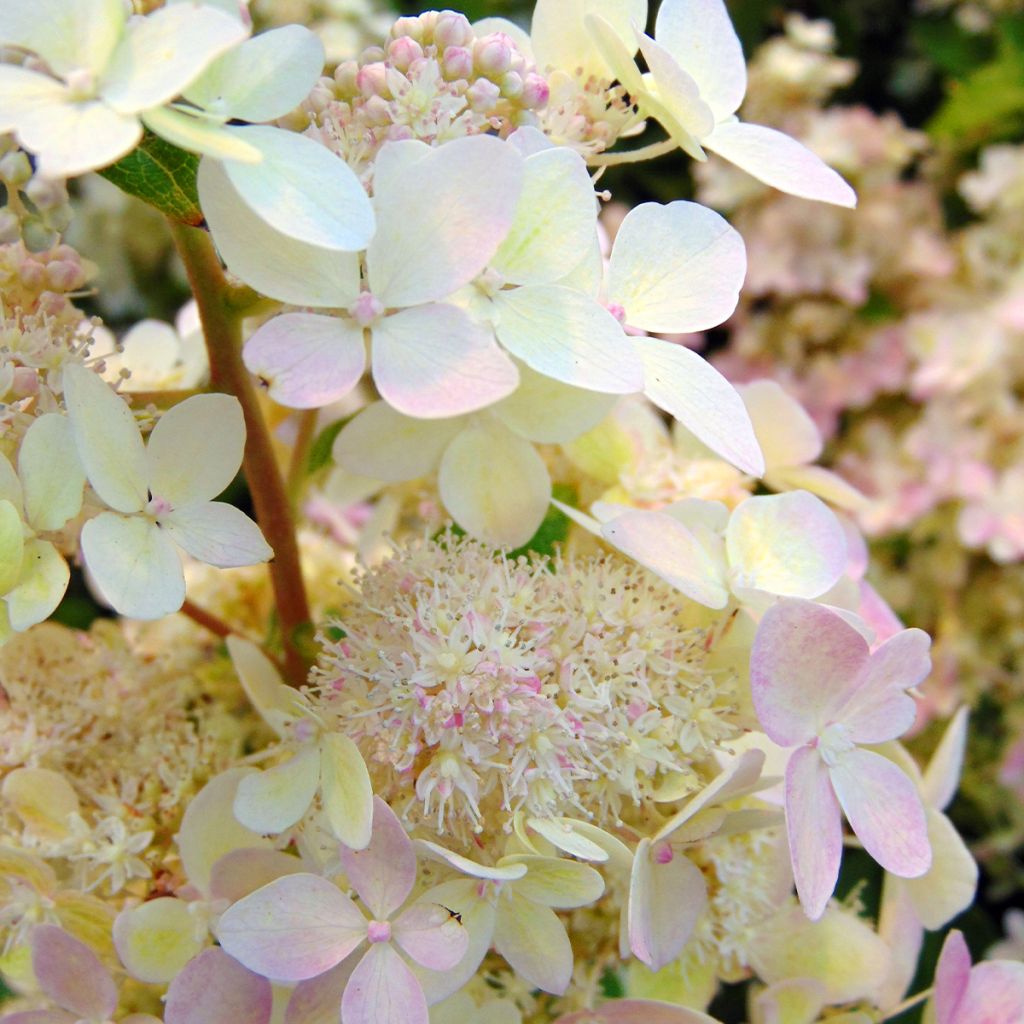

Hortensia - Hydrangea paniculata Confetti


Hortensia - Hydrangea paniculata Confetti
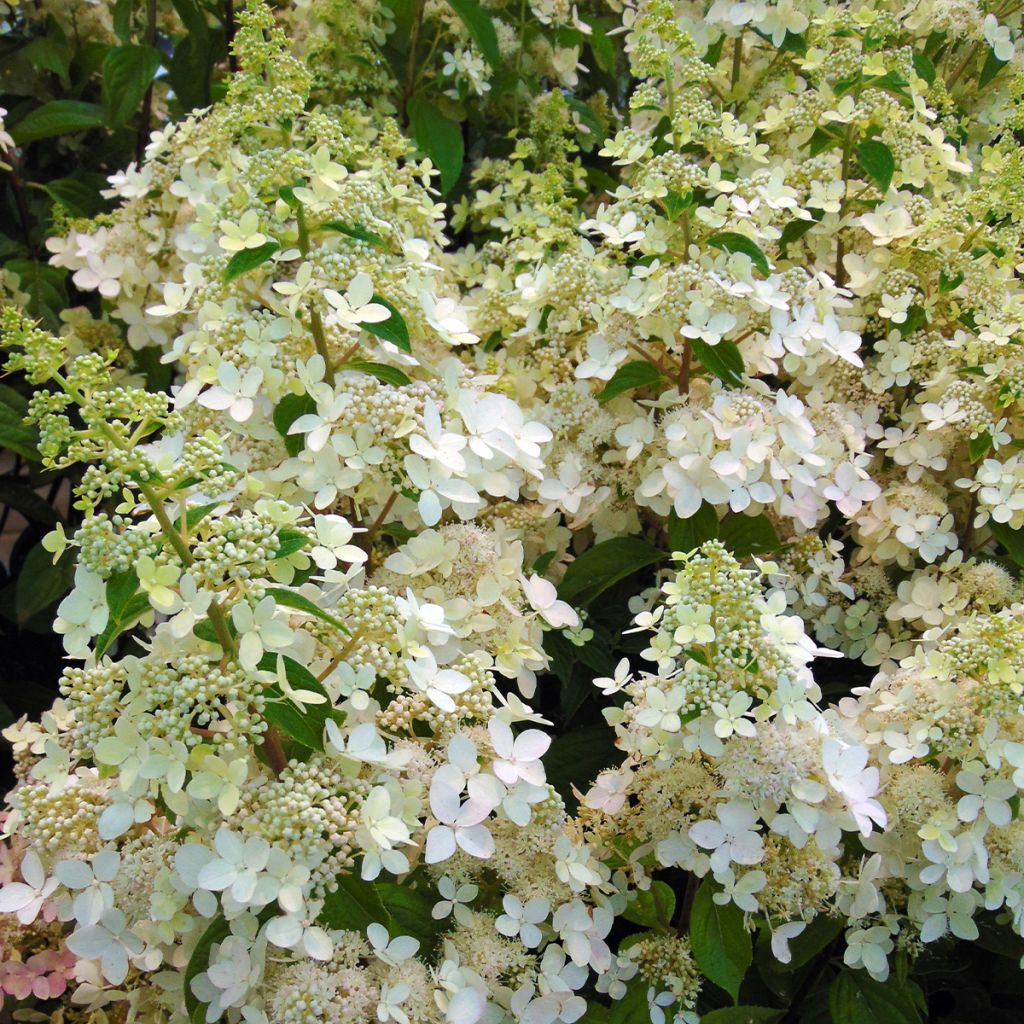

Hortensia - Hydrangea paniculata Confetti
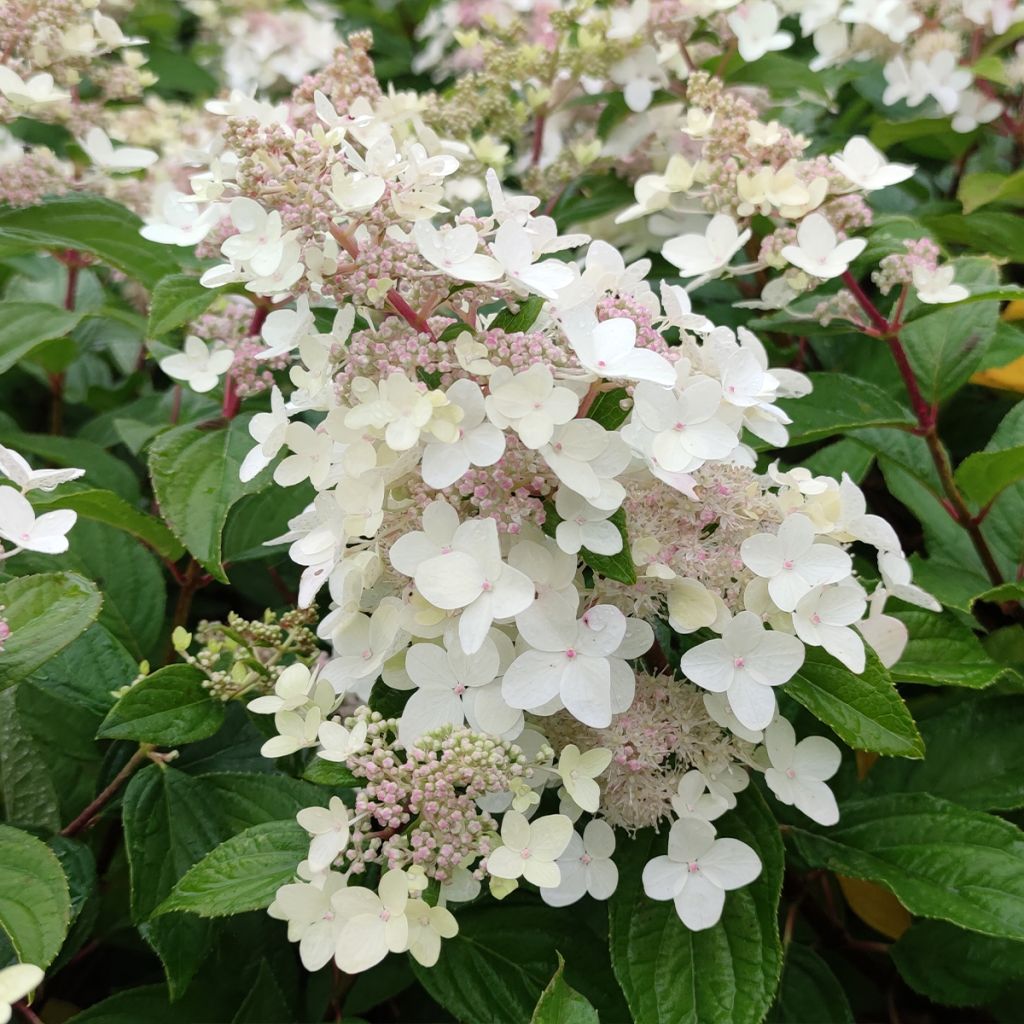

Hortensia - Hydrangea paniculata Confetti


Hortensia - Hydrangea paniculata Confetti
Hydrangea paniculata Confetti
Hydrangea paniculata Confetti ('Vlasveld 02'PBR)
Paniculate Hydrangea, Panicled Hydrangea, Panicle Hydrangea
This item cannot be shipped to the selected country
Delivery charge from €5.90
More information
Schedule delivery date,
and select date in basket
This plant carries a 24 months recovery warranty
More information
We guarantee the quality of our plants for a full growing cycle, and will replace at our expense any plant that fails to recover under normal climatic and planting conditions.
From €5.90 for pickup delivery and €6.90 for home delivery
Express home delivery from €8.90.
Does this plant fit my garden?
Set up your Plantfit profile →
Description
Hydrangea paniculata 'Confetti' is a charming and delicately scented paniculate hydrangea with a compact development, offering the gardener a generous and long summer flowering. Compact and bushy, this small shrub carries long panicles of delicately designed, colour-changing flowers on sturdy red-tinted stems which do not weaken under the weight of the flowers. Perfectly adapted to growing in large pots, this variety is very useful for arranging small spaces.
Hydrangea paniculata, also known as Paniculate Hydrangea, is a species of hydrangea belonging to the Hydrangeaceae family originating from the leafy forests of China and Japan. It is a particularly hardy plant and not very demanding in terms of soil. This shrub is easy to grow in any good, slightly moist garden soil, even in summer. It has given rise to a beautiful range of cultivars of all sizes and varied flower types.
Hydrangea paniculata 'Confetti', recently introduced to the horticultural market, was developed in the Netherlands. The shrub shows a modest development, with main upright, sturdy branches that remain straight under the weight of the flowers. At maturity, this variety will reach about 1.2 m (3 ft 11 in) in height for 80 cm (31.5 in) in width. From mid-June, numerous conical flower panicles bloom on the year's shoots; these can reach 30 cm (11.8 in) in length. They contain numerous fertile, single florets, evolving from a greenish hue to a more and more vivid pink as they age, passing through white. Their fragrance is pleasant and rather light. From spring, the reddish branches carry ovate leaves of a fairly light green colour, measuring 5 to 12 cm (2 to 4.7 in) long and 5 to 6 cm wide, which are finely dentate at the edge. They turn yellow in autumn before disappearing in winter. Paniculate hydrangeas are less sensitive to late frosts as they bloom mostly on the year's shoots. This variety will resist temperatures as low as -25 °C (-4 °F), or even below.
Hydrangea paniculata Confetti distinguishes itself from its cousins, the large-leaved hydrangeas (Hydrangea macrophylla), by its good tolerance to sun, sea spray and relative drought. Installed in well-loosened garden soil without too much limestone, this shrub forms, in a few seasons, an attractive specimen which remains very floriferous for three months. Install it alone, in a low hedge or in a massif, or even in clear undergrowth, mixed with other hydrangeas and perpetual roses to play with contrasts and shapes. You can also combine it with grasses like Miscanthus, Panicum virgatum Squaw and Stipa. Its small size allows it to be incorporated, without hesitation, into a small garden and to grow it without difficulty in a large pot on the terrace. It will live there for many years provided it receives regular watering and applications of fertiliser.
Report an error about the product description
Plant habit
Flowering
Foliage
Botanical data
Hydrangea
paniculata
Confetti ('Vlasveld 02'PBR)
Hydrangeaceae
Paniculate Hydrangea, Panicled Hydrangea, Panicle Hydrangea
Cultivar or hybrid
Other Hydrangea Paniculata
Planting and care
Hydrangea paniculata Confetti is not demanding about the nature of the soil, as long as it is not too heavy or calcareous and remains rather humid, without excess moisture. It requires a non-scorching sunny or semi-shaded exposure. At the time of planting, set it in deeply worked soil. A good base fertiliser (horn or dried blood) will promote the recovery of your plant and feed it without risk of burning. If your soil tends to be dry, mix a good-quality compost with the soil when filling in the planting hole and provide a surface watering basin. Also place a vegetable mulch at its base to save on watering in the summer.
At the end of summer, we advise you not to cut the dry panicles that will protect the terminal shoots of the branches in winter; you should cut all the dry flowers at the end of February or on the first summer days. The plant's spring vegetation appears rather late.
Hydrangea paniculata should be pruned at the end of winter to produce more inflorescences and maintain a dense habit. Apart from deliberately limiting the expansion of the bush if it has become too large, you should ensure not to remove the two-year-old branches, as doing so will compromise the development of the plant.
Hydrangea Paniculata is a little more resistant to drought and easily establishes itself even in non-acidic soil. It blooms generously from June until the first frosts. When planted in the sun, its inflorescences change colour nicely at the end of the season.
Planting period
Intended location
Care
-
, onOrder confirmed
Reply from on Promesse de fleurs
Summer-flowering shrubs
Haven't found what you were looking for?
Hardiness is the lowest winter temperature a plant can endure without suffering serious damage or even dying. However, hardiness is affected by location (a sheltered area, such as a patio), protection (winter cover) and soil type (hardiness is improved by well-drained soil).

Photo Sharing Terms & Conditions
In order to encourage gardeners to interact and share their experiences, Promesse de fleurs offers various media enabling content to be uploaded onto its Site - in particular via the ‘Photo sharing’ module.
The User agrees to refrain from:
- Posting any content that is illegal, prejudicial, insulting, racist, inciteful to hatred, revisionist, contrary to public decency, that infringes on privacy or on the privacy rights of third parties, in particular the publicity rights of persons and goods, intellectual property rights, or the right to privacy.
- Submitting content on behalf of a third party;
- Impersonate the identity of a third party and/or publish any personal information about a third party;
In general, the User undertakes to refrain from any unethical behaviour.
All Content (in particular text, comments, files, images, photos, videos, creative works, etc.), which may be subject to property or intellectual property rights, image or other private rights, shall remain the property of the User, subject to the limited rights granted by the terms of the licence granted by Promesse de fleurs as stated below. Users are at liberty to publish or not to publish such Content on the Site, notably via the ‘Photo Sharing’ facility, and accept that this Content shall be made public and freely accessible, notably on the Internet.
Users further acknowledge, undertake to have ,and guarantee that they hold all necessary rights and permissions to publish such material on the Site, in particular with regard to the legislation in force pertaining to any privacy, property, intellectual property, image, or contractual rights, or rights of any other nature. By publishing such Content on the Site, Users acknowledge accepting full liability as publishers of the Content within the meaning of the law, and grant Promesse de fleurs, free of charge, an inclusive, worldwide licence for the said Content for the entire duration of its publication, including all reproduction, representation, up/downloading, displaying, performing, transmission, and storage rights.
Users also grant permission for their name to be linked to the Content and accept that this link may not always be made available.
By engaging in posting material, Users consent to their Content becoming automatically accessible on the Internet, in particular on other sites and/or blogs and/or web pages of the Promesse de fleurs site, including in particular social pages and the Promesse de fleurs catalogue.
Users may secure the removal of entrusted content free of charge by issuing a simple request via our contact form.
The flowering period indicated on our website applies to countries and regions located in USDA zone 8 (France, the United Kingdom, Ireland, the Netherlands, etc.)
It will vary according to where you live:
- In zones 9 to 10 (Italy, Spain, Greece, etc.), flowering will occur about 2 to 4 weeks earlier.
- In zones 6 to 7 (Germany, Poland, Slovenia, and lower mountainous regions), flowering will be delayed by 2 to 3 weeks.
- In zone 5 (Central Europe, Scandinavia), blooming will be delayed by 3 to 5 weeks.
In temperate climates, pruning of spring-flowering shrubs (forsythia, spireas, etc.) should be done just after flowering.
Pruning of summer-flowering shrubs (Indian Lilac, Perovskia, etc.) can be done in winter or spring.
In cold regions as well as with frost-sensitive plants, avoid pruning too early when severe frosts may still occur.
The planting period indicated on our website applies to countries and regions located in USDA zone 8 (France, United Kingdom, Ireland, Netherlands).
It will vary according to where you live:
- In Mediterranean zones (Marseille, Madrid, Milan, etc.), autumn and winter are the best planting periods.
- In continental zones (Strasbourg, Munich, Vienna, etc.), delay planting by 2 to 3 weeks in spring and bring it forward by 2 to 4 weeks in autumn.
- In mountainous regions (the Alps, Pyrenees, Carpathians, etc.), it is best to plant in late spring (May-June) or late summer (August-September).
The harvesting period indicated on our website applies to countries and regions in USDA zone 8 (France, England, Ireland, the Netherlands).
In colder areas (Scandinavia, Poland, Austria...) fruit and vegetable harvests are likely to be delayed by 3-4 weeks.
In warmer areas (Italy, Spain, Greece, etc.), harvesting will probably take place earlier, depending on weather conditions.
The sowing periods indicated on our website apply to countries and regions within USDA Zone 8 (France, UK, Ireland, Netherlands).
In colder areas (Scandinavia, Poland, Austria...), delay any outdoor sowing by 3-4 weeks, or sow under glass.
In warmer climes (Italy, Spain, Greece, etc.), bring outdoor sowing forward by a few weeks.

































